When is the Best Time to Visit Hue, Vietnam?
When visiting Vietnam, Hue should be one of the top places on your itinerary. It is a wonderful imperial city of Vietnam where you can explore the rich culture and history of this country. Not only is there the Imperial Citadel but there are also many other things to see – the temples, the mountains, the Perfume River, and not to mention tons of off-the-beaten-track discoveries to experience in addition to the historical sites.
Hue is slightly north of Da Nang, which should be your destination upon arrival via flight. From Da Nang to Hue, it is around two hours on wheels and there are many beautiful sights to see along the way – Da Nang beaches, Hai Van Pass, Lang Co Bay etc. For more options about getting to Hue and how to get around in the city, check out my article here. The city itself has the old citadel, the burial place of the Nguyen lords, and many another natural, historical sites, and even a hidden abandoned amusement park.
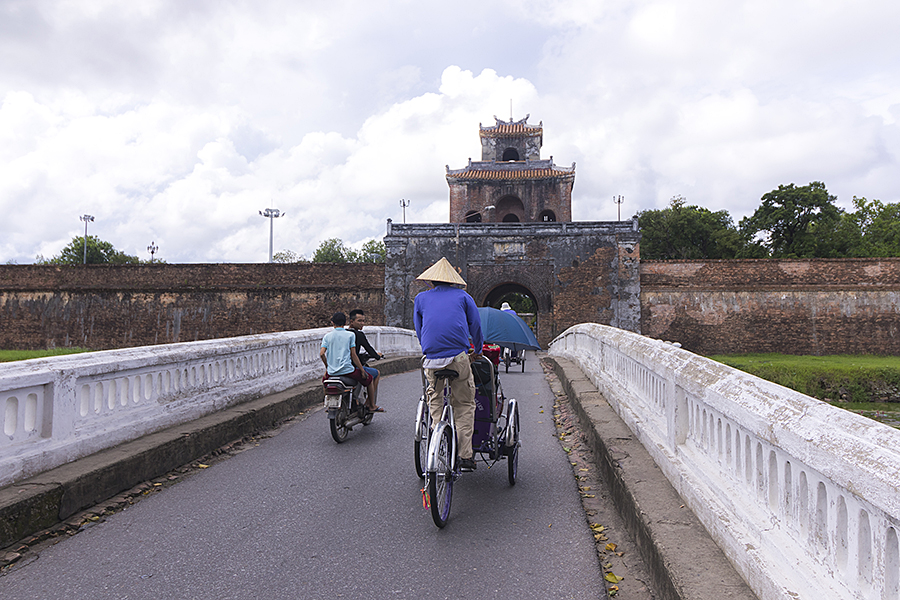
With so many things to experience, which time of the year is best to visit Hue? I will cover that question for you and also guide you briefly through this city, including pro tips and tricks for the best experience. Let’s go!
Contents
The Geography and Climate of Hue
Hue is among the largest cities along the central coast of Vietnam. The map of Hue shows a city covered by an arc of lush green mountains, with a beautiful river flowing through it. Hue is heavily affected by the monsoon climate and thus has two distinctive periods: wet and dry season. The Truong Son Mountains run around the city and keep in the moisture during the rainy season, but block the heat from escaping during the dry months. Within a day, there can be a blazing morning till noon, and an unending rainfall until midnight – I have experienced that. Therefore, the weather in this city is infamous for being unpleasant and unpredictable, so it is best to always have a raincoat with you.
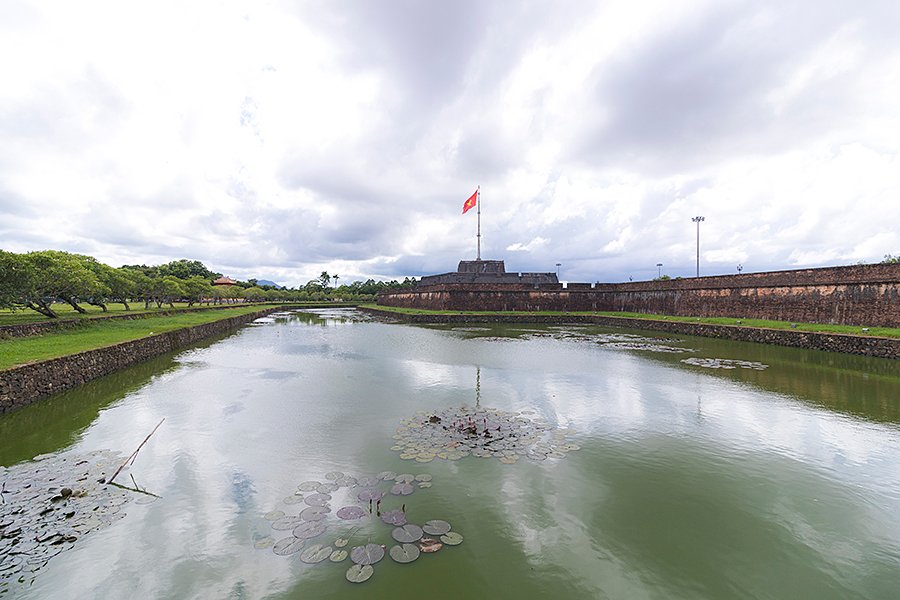
Wet Season in Hue
Rain falls more frequently from September to March. During this time, the weather cools down a bit, chill yet humid. Keep in mind that after the rain comes the sun, nothing is worse than being in a steaming giant pot.
You should avoid the typhoon season from September to December. There will be a lot of rainfall and floods lasting for hours or even days, so you should check the weather forecast carefully before making your move during these months. Despite the bad weather, every accommodation option and tourist service will be at their lowest rates during this time. A handful of sites will be open for visiting but there is a high chance that many places close down for preservation and maintenance during this flooding season. Only travel to Hue during this time if you do not have any other options.
What to Wear During the Wet Season
Overall, jackets are useful all the time when visiting Hue during this season, but winter coats might come in handy especially during the nights. Eight degrees Celsius with high humidity feels like being in a freezer, trust me, -25 degrees Celsius is better than this. Cold paired with humidity is a lethal combination. A raincoat should always be within reach, but you can also buy disposable ones for less than 20,000 VND (almost 1 USD). The weather can sometimes be a bit annoying and unpredictable, so bringing both short sleeves and long sleeves will keep you from getting frustrated!
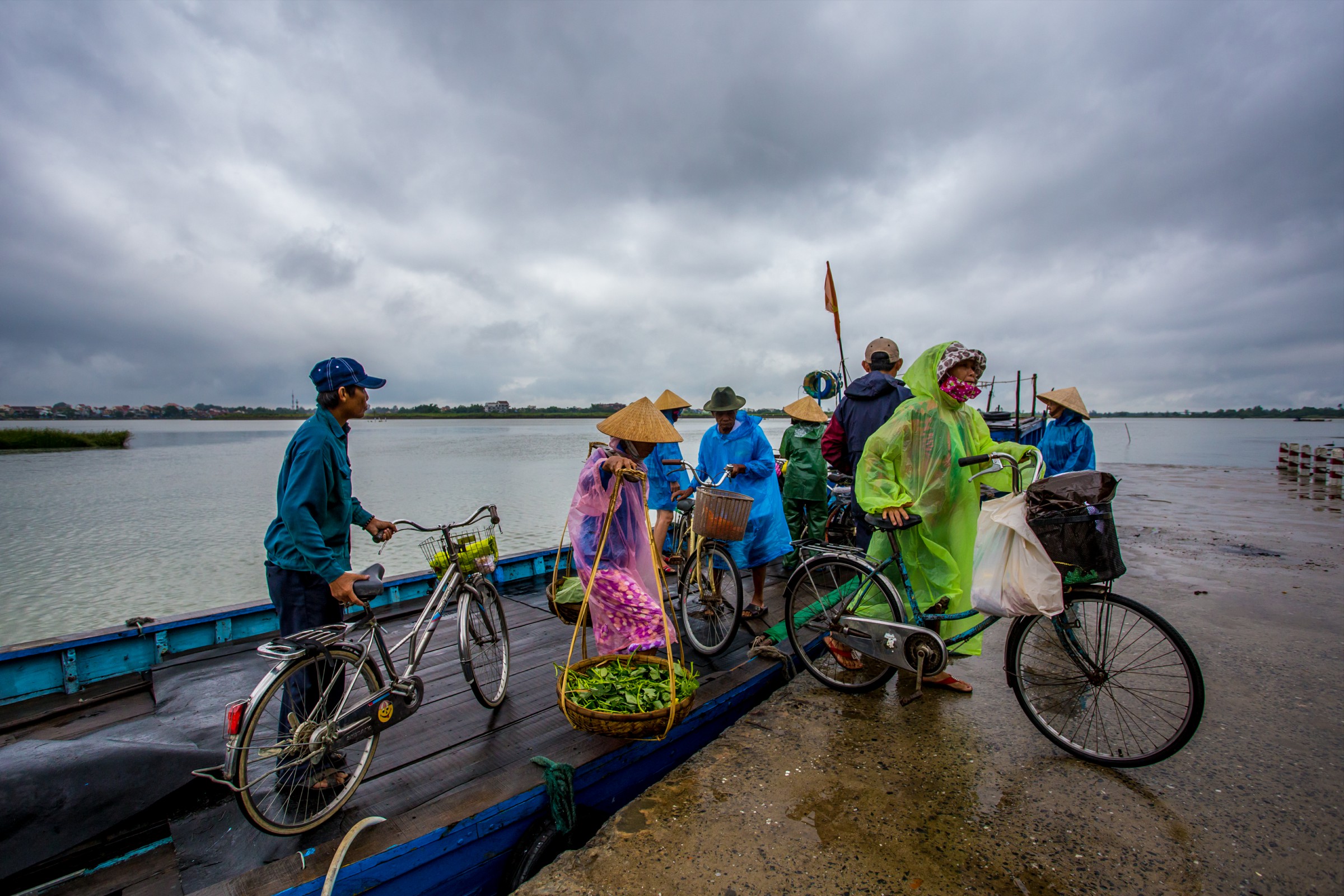
Travel Tips & Tricks for the Wet Season
To recap for traveling to Hue during the wet season:
- Have with you a raincoat or travel-size umbrella all the time: These will be your saviors when hanging around Hue in the rain season. Downpours are sudden and aggressive.
- Always check the weather forecast: To plan and modify your day (and your stay) accordingly. The weather forecasting apps on iOS and Android are pretty reliable. In case, you can still always google “Weather in Hue”.
- Have a plan B: Hue weather is sometimes unpredictable, despite the weather forecast. So having a plan B is necessary in case a sudden flood rushes in during your stay.
Best Time for a Visit: January to April
January to April is the perfect time to visit Hue. The rains are not aggressive anymore and the weather is temperate, with temperatures that stay between 20 degrees Celsius and 24 degrees Celsius. The temperature can go down to eight degrees Celsius during the winter nights from January to March. It is neither too hot and humid nor too cold and wet during the day, which is wonderful for pleasantly exploring the city.
Most annual festivities are held during this time of the year, such as Tet (Lunar New Year – between January and February), traditional villages’ festivals, and the Hue Festival in April. There you can enjoy cultural shows, spring markets, traditional music performances, royal ceremonies, and seasonal local dishes. You will be accompanied by a flock of tourists and locals also.
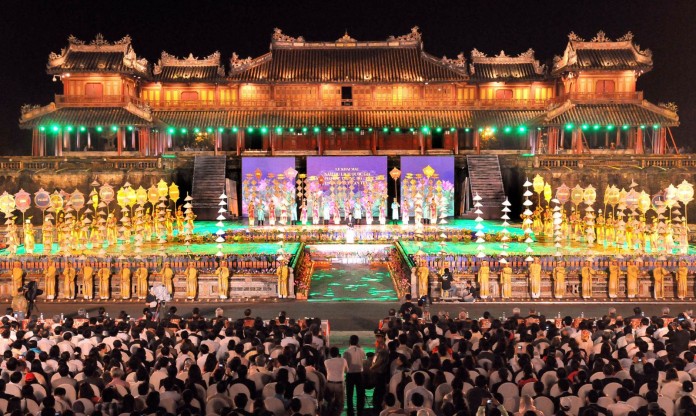
Check out here for more in-depth information about Hue before, during and after the Lunar New Year (from January to April).
Experience Hue to the Fullest This Season!
As stated before, Hue never runs out of interesting historical and cultural sights that will bring you a full experience of Vietnam. Before coming to the city, be sure to have a bit of time to plan your itinerary, you do not want to miss out on anything that you fancy, do you? People say Hue is a “slow” city, so take it easy, with a relaxing time. Here are some articles that will help you plan a perfect trip to Hue:
Discovering Hue: Vietnam’s Imperial City and UNESCO World Heritage Site
One Day in Hue
Get off The Beaten Track in Hue
A Foodie’s Guide to Hue
After the festive months, the temperature continues to rise and reaches the peak during summer months from May to August, leaving the rainy season behind. Scorching Foehn winds from Laos will boost your discomfort to the fullest. You have probably experienced this blazing stream of air if you are from the West Coast of the states and the areas next to mountain ranges in Europe. Here comes the dry season.
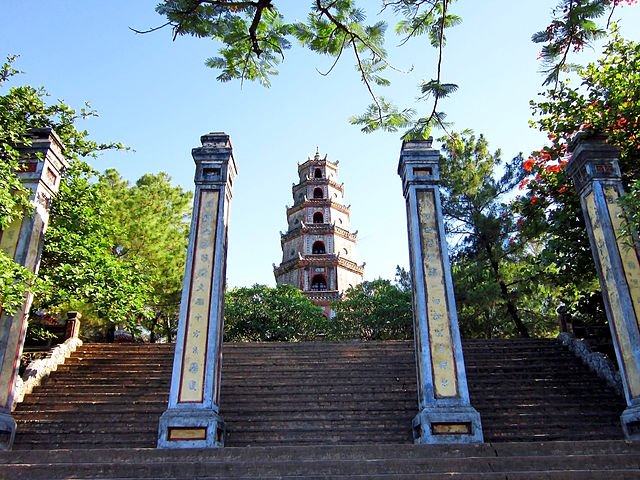
Dry Season in Hue
The dry season of Hue occurs from March to August, and it is hot with fluctuating humidity. The highest temperature can reach up to 40 degrees Celsius between May and August, with an average around 30 degrees Celsius. This is also the time when the most tourists visit Hue.
Yet, do not be fooled by the tourist flow. The months from May to August are the high season just because that time of the year is the most convenient for travelers, it’s summer holiday. Every common site and service is open, but it is not the best time to experience Hue to the fullest, since most of the cultural activities take place during springtime, from January to April mentioned above.
What to Wear During the Dry Season
Wear anything that fits your style. The culture of Hue is not that conservative anymore, but please note that when you are going to religious sites and tombs, be respectful and wear pants and cover your shoulders. Sweaters and raincoats should be by your side in case the weather turns bad unexpectedly. It is also necessary if you take night-long sleeper buses to Hue, because it can be freezing during late nights in these wheeled boxes.
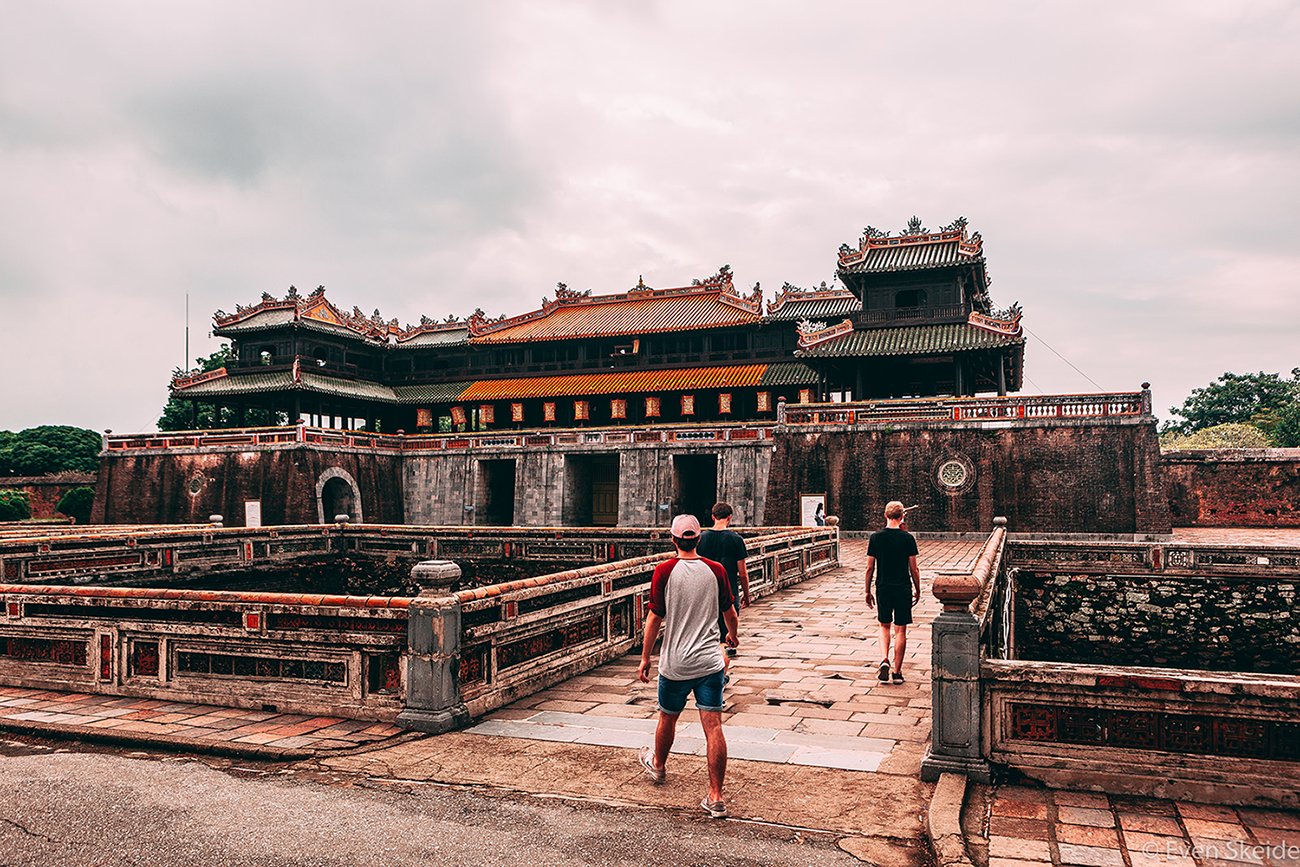
Travel Tips & Tricks for the Dry Season
If you can only make it to Hue during the dry season, almost every tourist attraction is available except the festivals and local activities. Yet, the sun is shining and the sky is clear, providing a perfect environment to see and experience this wonderful city. There are a handful of tips that you should know before getting carried away by adventure:
- Mind your hydration: Buy a big bottle of water and bring it with you, especially if you are exploring outdoors. The extreme heat will suck away your body’s hydration real quick. Make sure to stay well nourished too, stacking up vitamins and micro minerals to compensate for the loss.
- Wear sunscreen: The blazing atmosphere of Hue is not ideal for getting tanned. High level of UV and varied humidity will mess with your skin really bad.
- Bring protective clothes: If you do not want to get a sun-burnt skin or curled-up, dried hair and sore eyes, bring with you long sleeves or a jacket, a cap, and sunglasses.
- Have a raincoat: Be prepared for a sudden downpour anytime, as the water in the area is constantly vaporizing and precipitating.
- Book accommodation in advance: Summer is the peak season in Hue even it is not the best time to visit. It will be difficult to find a place if you do not have the accommodation ready beforehand, and the prices are going to rocket as you arrive.
Hue is a fantastic place to visit during January to August, and a total disaster during September to December. The best time is from January to April. Yet, whether it is dry or wet season, you should always prepare carefully for whenever the weather changes. So that’s it, I hope this guide and the articles I provided will bring you the ultimate experience in Hue. While in or on your way to Hue, you’re looking for a great tour to help you tackle the magnificent Hai Van Pass. You’ll be guaranteed a great time.
Enjoyed this article and would like more fun information on what to do, see, and eat while in Vietnam? Visit us at the 4UTrip Blog!
